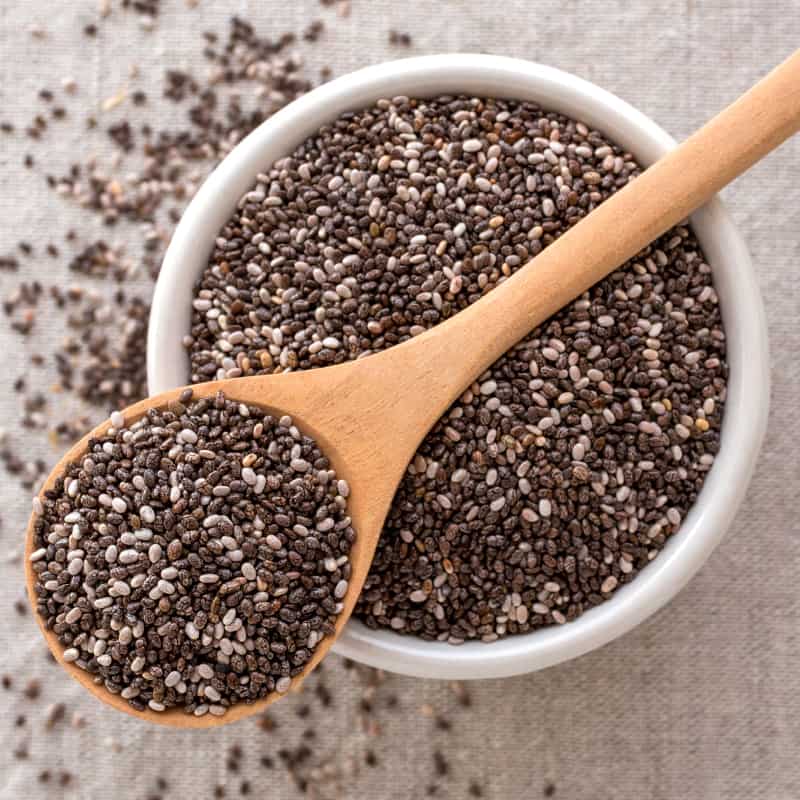This Dr. Axe content is medically reviewed or fact checked to ensure factually accurate information.
With strict editorial sourcing guidelines, we only link to academic research institutions, reputable media sites and, when research is available, medically peer-reviewed studies. Note that the numbers in parentheses (1, 2, etc.) are clickable links to these studies.
The information in our articles is NOT intended to replace a one-on-one relationship with a qualified health care professional and is not intended as medical advice.
This article is based on scientific evidence, written by experts and fact checked by our trained editorial staff. Note that the numbers in parentheses (1, 2, etc.) are clickable links to medically peer-reviewed studies.
Our team includes licensed nutritionists and dietitians, certified health education specialists, as well as certified strength and conditioning specialists, personal trainers and corrective exercise specialists. Our team aims to be not only thorough with its research, but also objective and unbiased.
The information in our articles is NOT intended to replace a one-on-one relationship with a qualified health care professional and is not intended as medical advice.
Does Golf Count as Exercise? The Answer May Surprise You!
May 4, 2023

Does golf count as exercise? Considering the leisurely pace at which the sport is commonly played, it’s a question many health enthusiasts likely have.
Now, thanks research published in BMJ Open Sport & Exercise Medicine, we just may have the answer … and it’s sure to surprise you.
Study: Golf as Exercise
When it comes to sports, golf isn’t usually thought of as the most physically active, but it turns out a round of golf has surprising benefits for the both the body and mind. In fact, it could even provide greater benefits than other forms of exercise, such as Nordic walking, (which is plenty beneficial in its own right).
That’s according to the BMJ Open Sport & Exercise Medicine study that was conducted in Finland. In order to come to this conclusion, researchers examined three forms of age-appropriate aerobic exercise — golfing, Nordic walking and walking — and their effects on health.
More specifically, 25 healthy golfers (nine females and 16 males) aged 64–72 were enrolled in a randomized cross-over experiment for the three forms of exercise: playing 18 holes of golf, doing a six-kilometer Nordic walk or going for a typical six-kilometer walk. The study then compared the effects of these three activities on blood pressure, blood sugar and cholesterol levels.
What they found was that all three forms of exercise had positive effects on these cardiometabolic markers, with Nordic walking and regular walking providing greater intensity of exercise and a bigger decrease in diastolic blood pressure. However, somewhat surprisingly, golfing actually had a greater positive impact on glucose metabolism and lipid profile, thanks in part to the longer duration to play 18 holes of golf.
The study authors ultimately concluded:
Acute bouts of aerobic exercise improved cardiovascular profile in healthy older adults. Despite the lower exercise intensity of golf, the longer duration and higher energy expenditure appeared to have a more positive effect on lipid profile and glucose metabolism compared with Nordic walking and walking.
They added:
In conclusion, all three types of AE improved the cardiovascular profile in older adults when performed in acute bouts despite differences in duration and intensity. However, the lower exercise intensity of golf compared with Nordic walking and walking, the longer duration and higher total energy expenditure involved in playing golf seem to positively affect lipid profile and glucose metabolism. These age-appropriate AEs can be recommended to healthy older adults as a form of health-enhancing physical activity to prevent CVDs and can also be used as a treatment strategy to improve cardiometabolic health among those who already have a CVD.
Benefits of Golfing
While the study out of Finland was limited in scope and had some other limitations by the researchers’ own admission, several other studies have shown the beneficial effects of golf as exercise.
For instance, a large body of evidence published in 2017 in the British Journal of Sports Medicine laid out many benefits associated with golfing, including:
- Boosting cardiovascular, respiratory and metabolic profiles
- Improving overall well-being
- Aerobic benefits, including walking between four to eight miles during a round of golf
- Can be done at a low, moderate or high intensity
- “May improve proprioception, balance, muscle endurance and function particularly in the elderly”
- Possibly help reduce mortality and increase longevity
- May help treat and/or prevent “chronic diseases, including ischaemic heart disease, type 2 diabetes, stroke, and colon and breast cancer.”
- Could improve and help maintain lung function
- Helps create social connections, which are beneficial for mental health
- Supports overall improved mental health and well-being, thanks in part to spending time outside in nature
Overall, the researchers in this review concluded:
Practitioners and policymakers can be encouraged to support more people to play golf, due to associated improved physical health and mental well-being, and a potential contribution to increased life expectancy. Injuries and illnesses associated with golf have been identified, and risk reduction strategies are warranted. Further research priorities include systematic reviews to further explore the cause and effect nature of the relationships described. Research characterising golf’s contribution to muscular strengthening, balance and falls prevention as well as further assessing the associations and effects between golf and mental health are also indicated.











